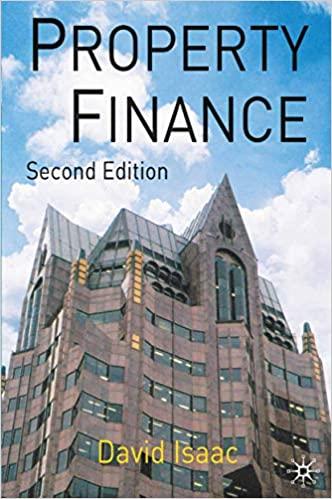Question
Assume that you are a loan officer of a bank. A local church is seeking a $4 million, 20-year loan to construct a new classroom
Assume that you are a loan officer of a bank. A local church is seeking a $4 million, 20-year loan to construct a new classroom building. The church's statement of revenues and expenditures are as follows:
Revenues $2 million , Expenditures $2 and Excess of revenues over expenditures = $0
As an accountant, which of the below statements do you believe are correct?
1. The information provided should, by itself, pose no obstacle to approving the loan. For sure, revenues just cover expenditures, allowing for no excess to cover the debt service on the loan and the additional operating expenditures that will be incurred when the classroom building is put into use. The key issue facing a loan officer, however, is whether the church members are both willing and fiscally able to pay for the new facility and to cover the additional operating costs. The fiscal capacity of the church cannot be assessed independently of that of its members. The financial statements reveal that the churchs assets will have a market value of $7.2 million (new and old facilities plus cash and investments) when the classroom building is complete. If some or all of these assets are used to secure the loan, then the bank may have a reasonable cushion against default. However, market values of churches or other special-purpose facilities are notoriously unreliable. Moreover, for obvious reasons, banks are reluctant to foreclose on local churches. 2. No need for the loan officer to review the financial statements for smoking guns such as contingent liabilities, litigation, or unusual transactions. However, assuming that none are found, there is likely to be little in the financial statements to provide the basis for a loan decision.
3. If the loan officer were to approve the loan, he would likely do so in large measure because he has had a business relationship with members of the church and has confidence in their ability to manage the church and assure that the loan is repaid. Accordingly, he would probably want to review whatever information is available as to the character and credit worthiness of key church members and officers.
4. As implied in part a, as a matter of policy the church, like many not-for-profit organizations, generates only enough revenues to meet its expenditures. If the members opt to enhance the level of services provided by the church by building a new facility and thereby increase expenditures then presumably they will also increase their dues and contributions.
5. Financial statements of many not-for-profits are inadequate for making loan decisions because they report only on the entities themselves. However, the entities true fiscal condition cannot be determined apart from that of their constituents.
Step by Step Solution
There are 3 Steps involved in it
Step: 1

Get Instant Access to Expert-Tailored Solutions
See step-by-step solutions with expert insights and AI powered tools for academic success
Step: 2

Step: 3

Ace Your Homework with AI
Get the answers you need in no time with our AI-driven, step-by-step assistance
Get Started


